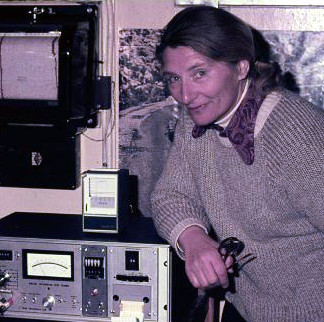Edith Farkas
Meteorologist (1921-1993)
A female pioneer in the largely male field of meteorology, Edith Farkas came to New Zealand as a Hungarian refugee after the Second World War. Her qualifications weren’t recognised, and she had to return to university for a MSc in physics before she could begin work at the New Zealand Meteorological Service.1
Farkas began to work in the field of ozone monitoring, which at the time was mostly used as a tracer gas to aid in the study of atmospheric circulation. She quickly became one of small group of pioneering scientists whose work lead to the discovery the ozone hole. Farkas also used surface ozone measurements to study air pollution.
In 1963, when she attended an International Symposium on Tropical Meteorology, Farkas was one of only two female attendees out of 76.2 In 1975 she became the first female Metservice staff member to visit Antarctica and in 1986, upon her retirement, became the first woman to receive the Metservice Henry Hill Award. In 1988 she was one of 26 ozone researchers – the only New Zealander, and only one of two women – from around the world who received special recognition, at the international Quadrennial Ozone Symposium in Gottingen, for their contribution to ozone research over the preceding 30 years.3
References:
1. ‘Flipbook: The Farkas Files Book 425698 | Front Cover - Bookemon’, accessed 29 October 2017, http://www.bookemon.com/flipread/425698/the-farkas-files.
2. ‘Edith Farkas | Iwonderweather’, accessed 29 October 2017, https://www.iwonderweather.co.nz/taxonomy/term/188.
3. "Unsettled outlook - New Zealand and the green house effect", Matt McGlone, Tom Clarkson and Blair Fitzharris. GP Books, 1990.
This profile is part of the series 150 Women in 150 Words that celebrates women’s contributions to expanding knowledge in New Zealand, running as part of our 150th Anniversary.

